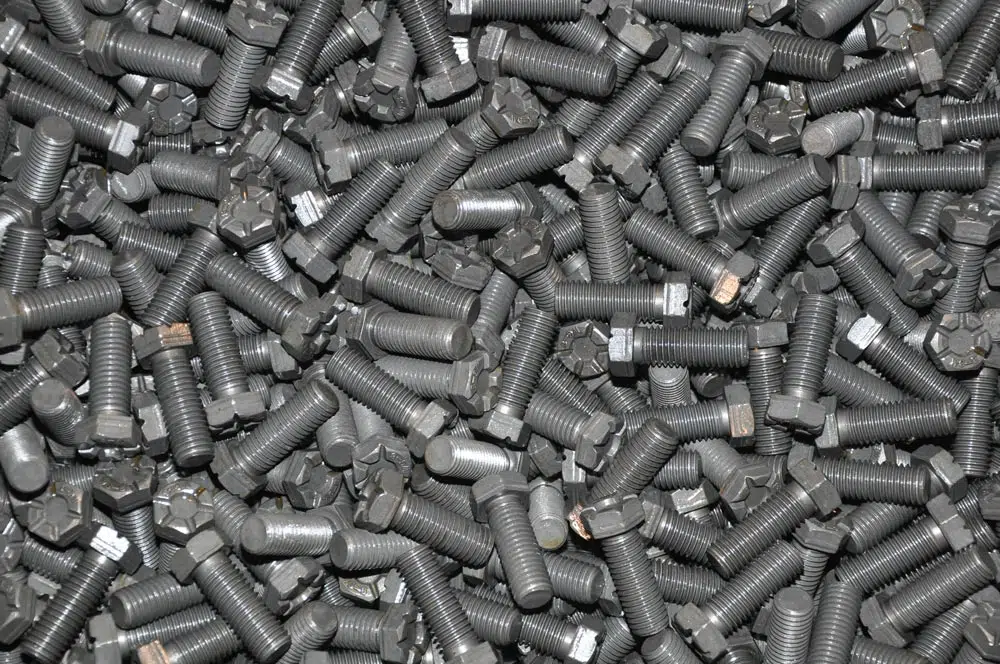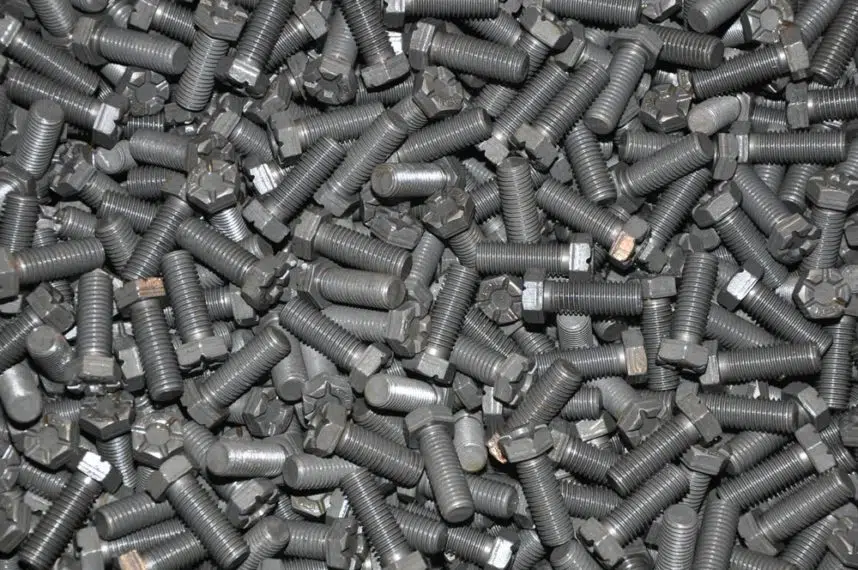Place bolts are just one of the many fasteners available, but they’re important ones. Their unique head designs, self-locking features, and outstanding vibration resistance make them the ideal fastener solution for a number of industrial applications.
In this article, we’ll discuss what Place bolts are, what they’re used for, and what types you may encounter.
What Are Place Bolts?
Place bolts are self-locking, free-spinning hex head bolts that prevent loosening due to vibration. While other bolts’ locking abilities reside in their threads, Place bolts are unique in that their heads are responsible for the locking action. This is an important quality because it not only produces up to seven times more vibration resistance than conventional hex head cap screws, but it also makes the bolts reusable — giving you the ability to loosen and re-tighten them without any loss of locking.
There are currently three different types of Place bolts on the market, including:
- AA Place bolts – The original design, invented by Charles Place back in the mid 1950s, which includes a symmetrical six-slot head with an undercut.
- B Place bolts – Wilson-Garner’s improved Place bolt design, featuring a five-slot asymmetrical head with an undercut.
- BH Place bolts – Wilson-Garner’s further improved Place bolt design, featuring the same five-slot asymmetrical head and undercut as B Place bolts, but with an oversized head.
Looking for a more technical description of the three types of Place bolts and how they work? Check out our past blog post, or our past article written for the American Fastener Journal.
How Are Place Bolts Made?
Place bolts are manufactured using the cold-forming process. Instead of heating up a material to mold it in a form, cold forming involves striking or pressing an unheated material within a form to meet specific dimensions. As the material is struck, its grains keep the same structure but flow along the contours of the part — all of which result in added strength and durability.
What Are Place Bolts Used For?
Over time, vibration causes fasteners to loosen. Loosened fasteners can be dangerous and costly for both manufacturers and end-product users. That’s where Place bolts come in handy.
Place bolts can be used for any application where vibration threatens to loosen traditional bolts or screws. Their unique head design creates a self-locking action that results in up to seven times more loosening resistance than traditional hex head cap screws. And while their industrial applications are abundant, some of the most common uses include:
- Military engineering
- Commercial engineering
- Flywheels
- Cylinder heads
- Ring gears
- Flexplates
- Compressor mountings
- Transmission covers
- Oil rig mud pumps
RELATED: Need a specialty bolt, screw, or stud? Wilson-Garner can help.
Wilson-Garner’s Patented Place Bolts
At Wilson-Garner, we know asymmetric self-locking Place bolts like the back of our hand. In fact, we developed them!
We engineered and received US patents on our Type B and Type BH Place bolts years ago. Although those patents have since expired and asymmetrical Place bolts can now be manufactured freely by anyone, we’re proud to say we trailblazed this path to innovative design, improved locking, and guaranteed dependability.
Wilson-Garner’s Place Bolt Product Specifications
Today, we’re able to manufacture all three types of Place bolts. We mainly use carbon or alloy steels, and we can accommodate parts with diameters from ¼” to 1”, or M8 to M20. We’re also able to work with Place bolts in both standard inch and metric sizes, following specific customer blueprints.
If you’re looking for a trusted asymmetric Place bolt solution, Wilson-Garner can help. Our Place bolts are ideal for any application where vibration resistance is a priority — and they’re manufactured according to your blueprint specifications, in any quantity you need. Contact our team to learn more.


